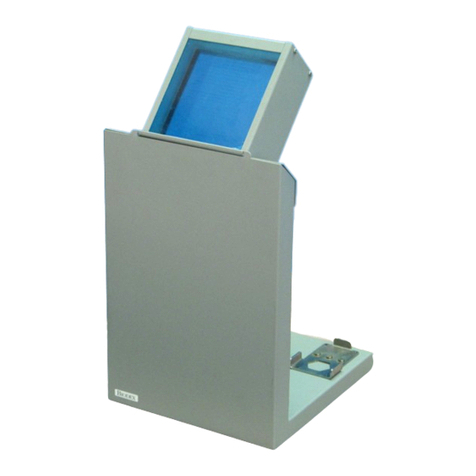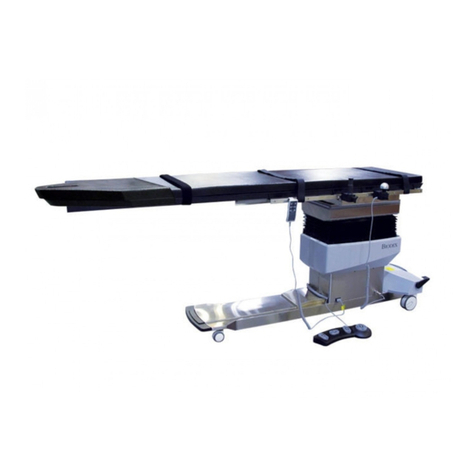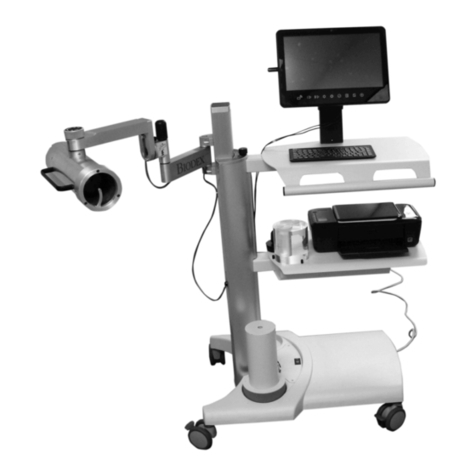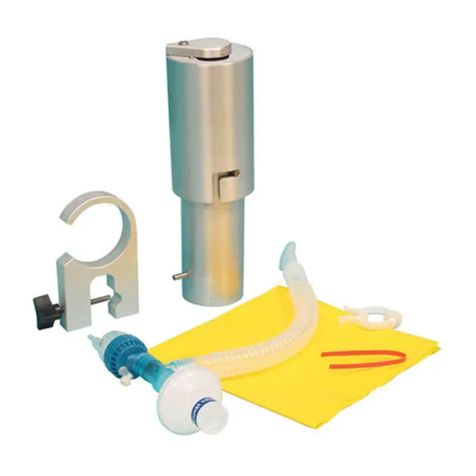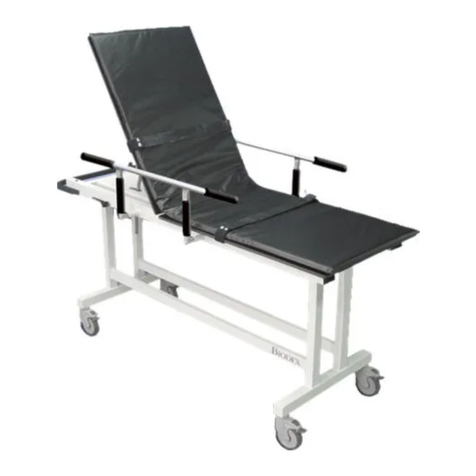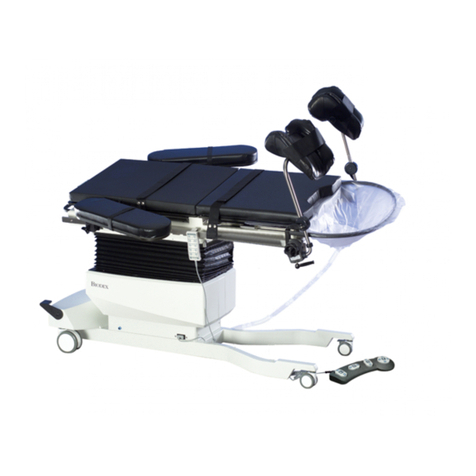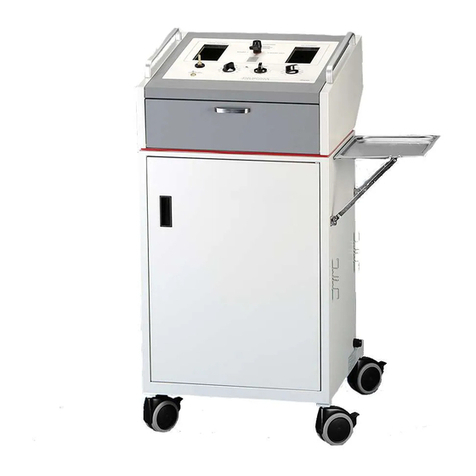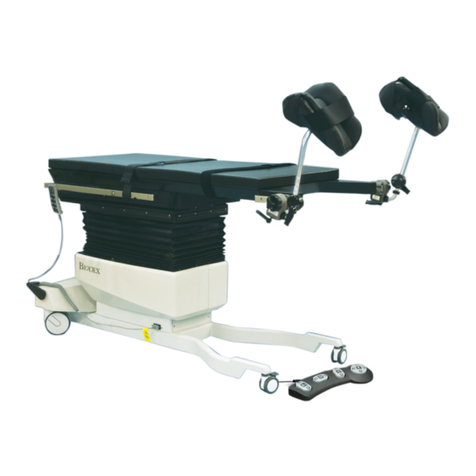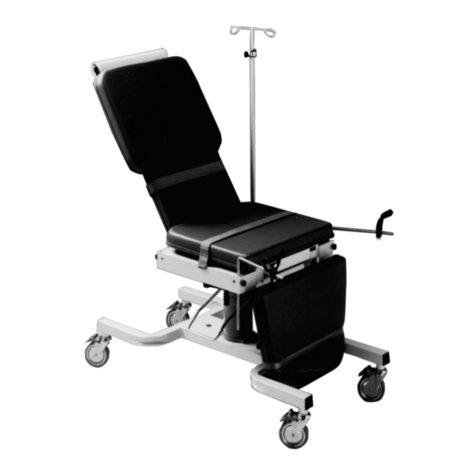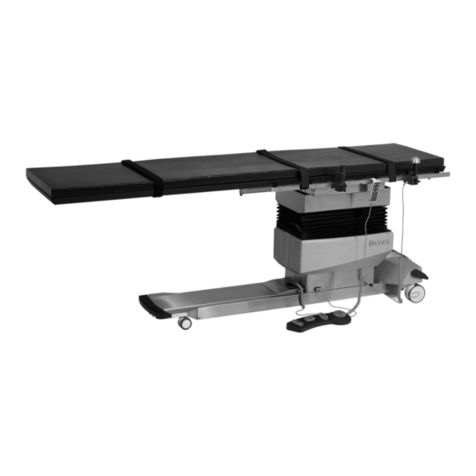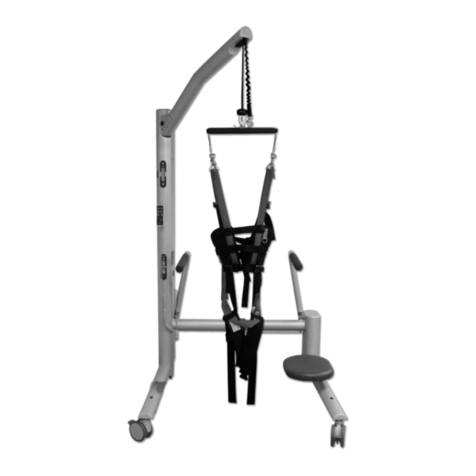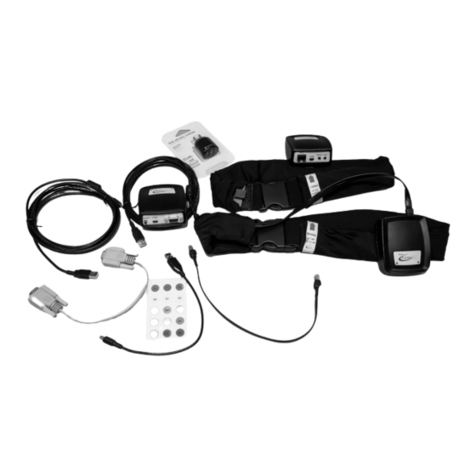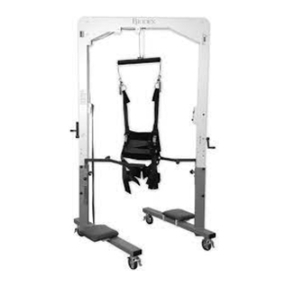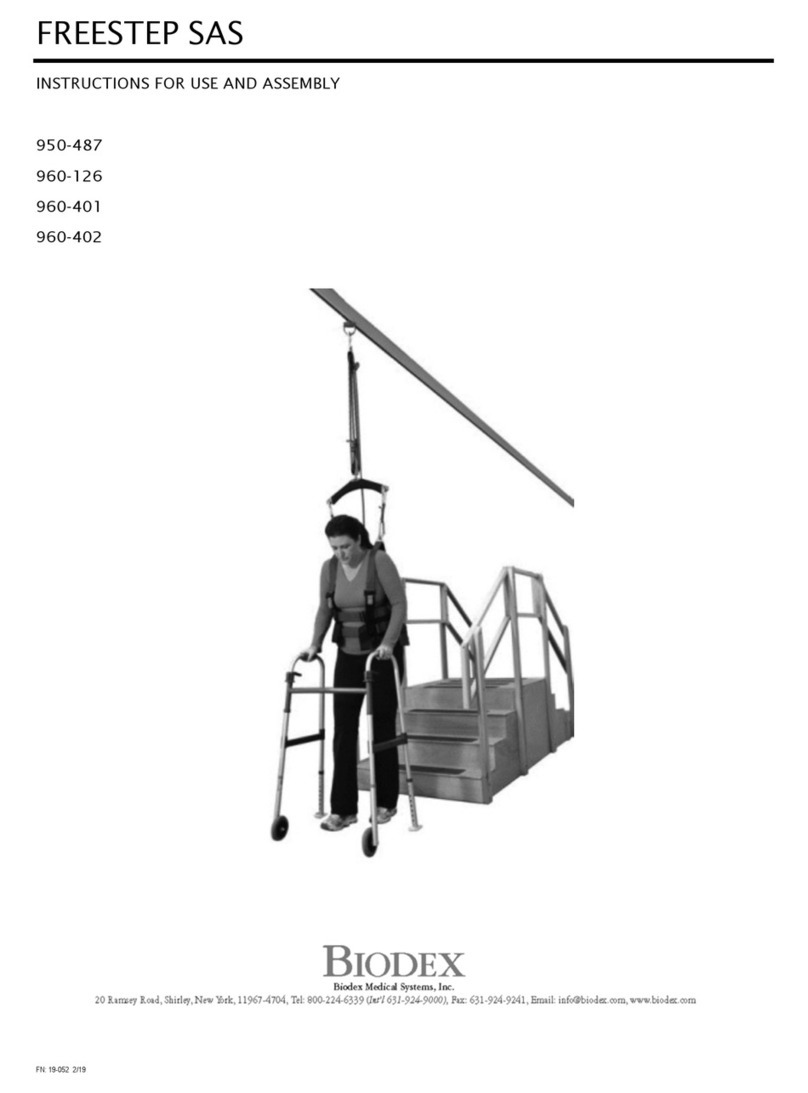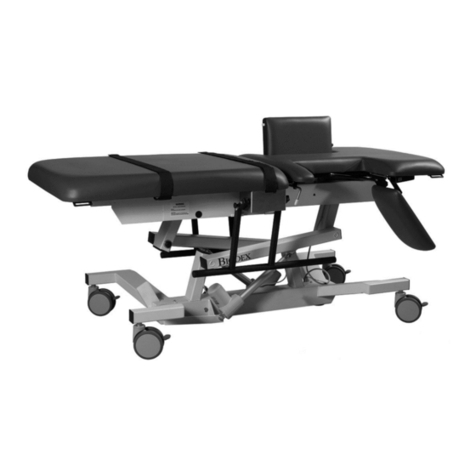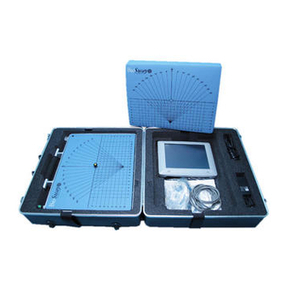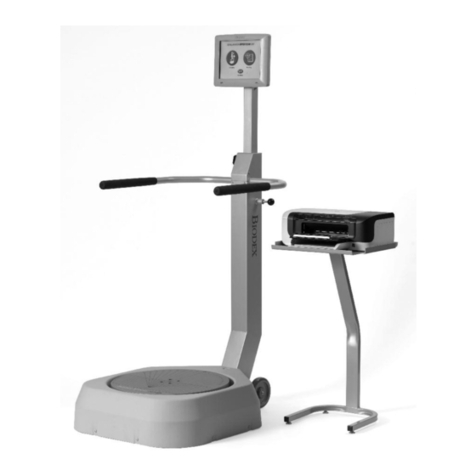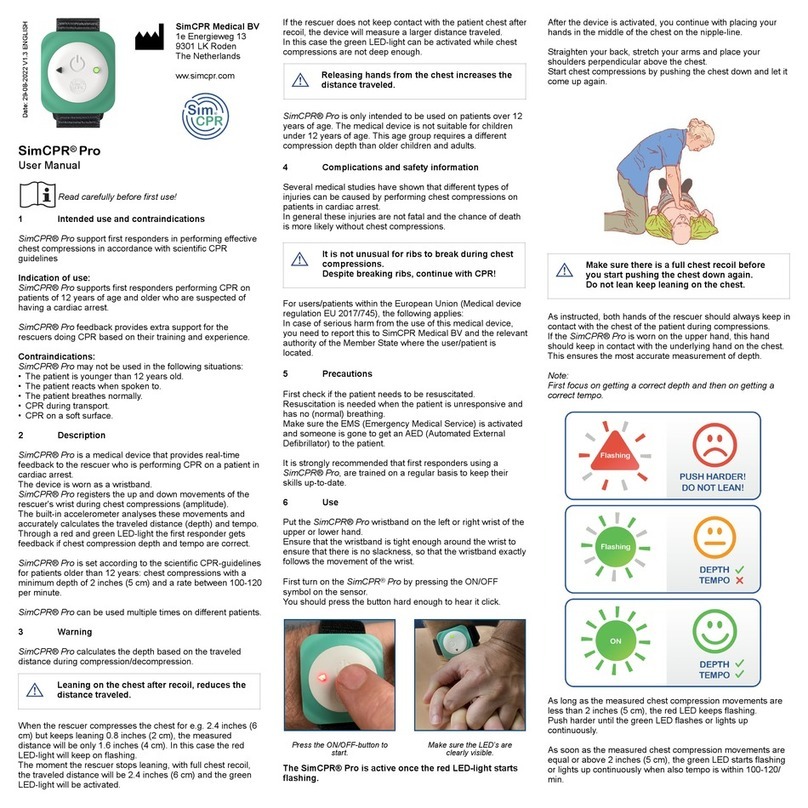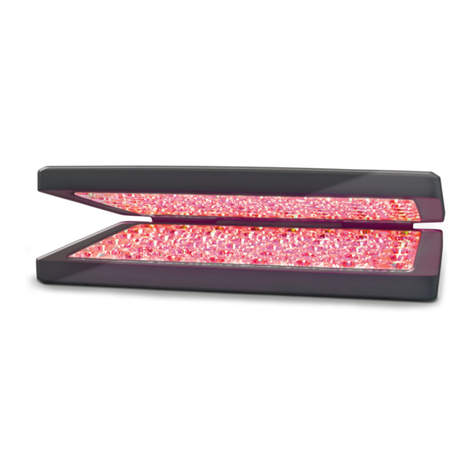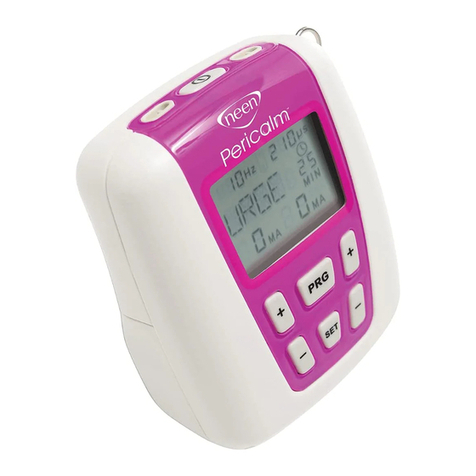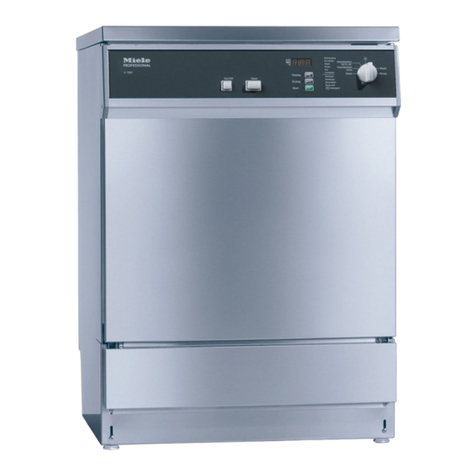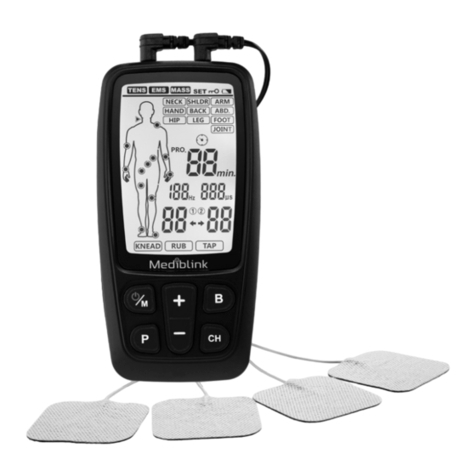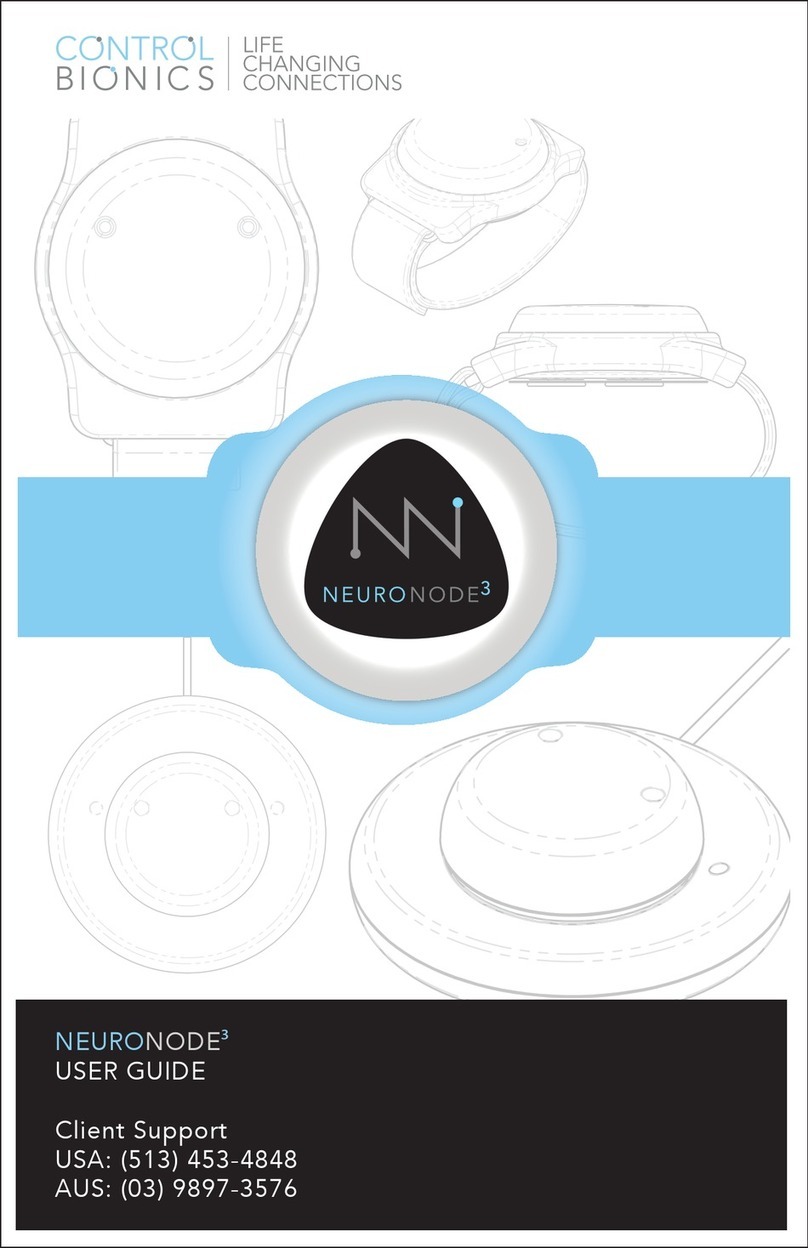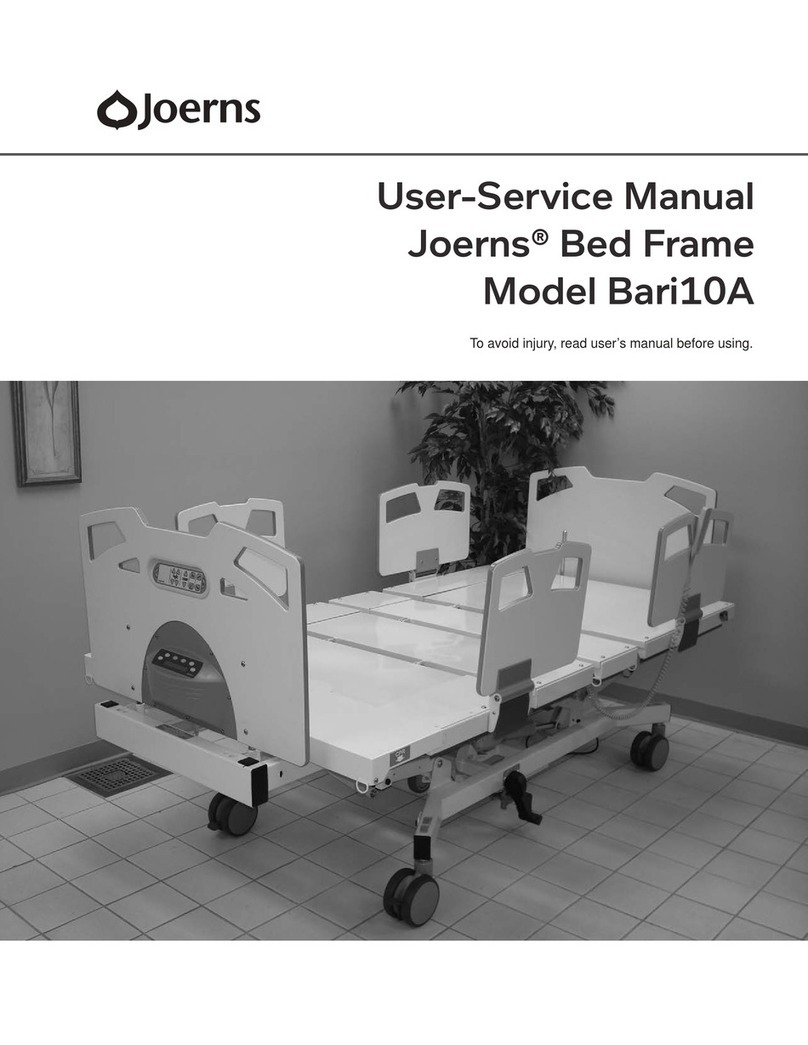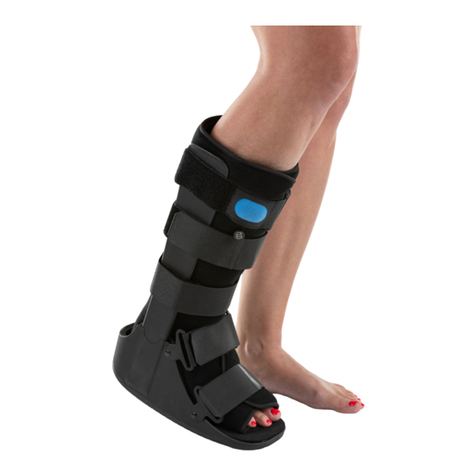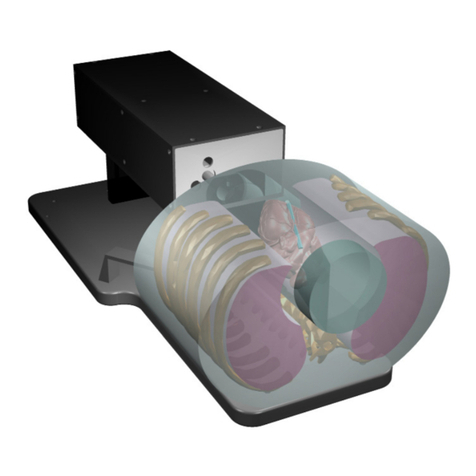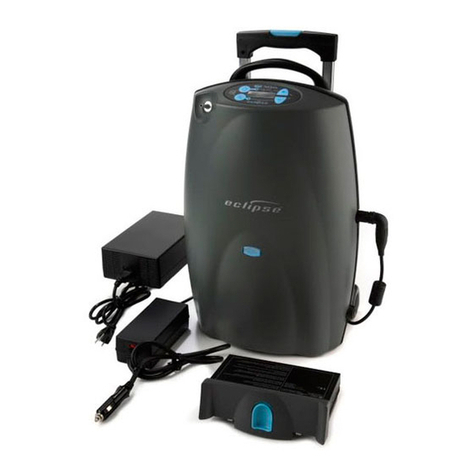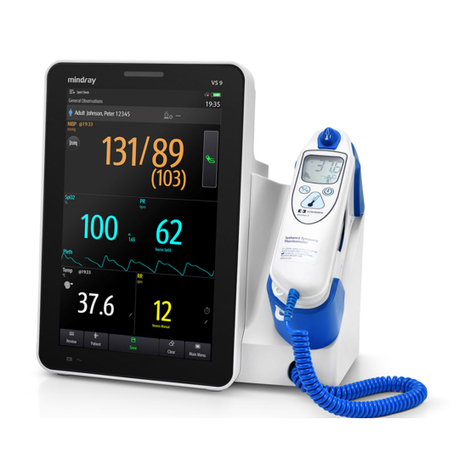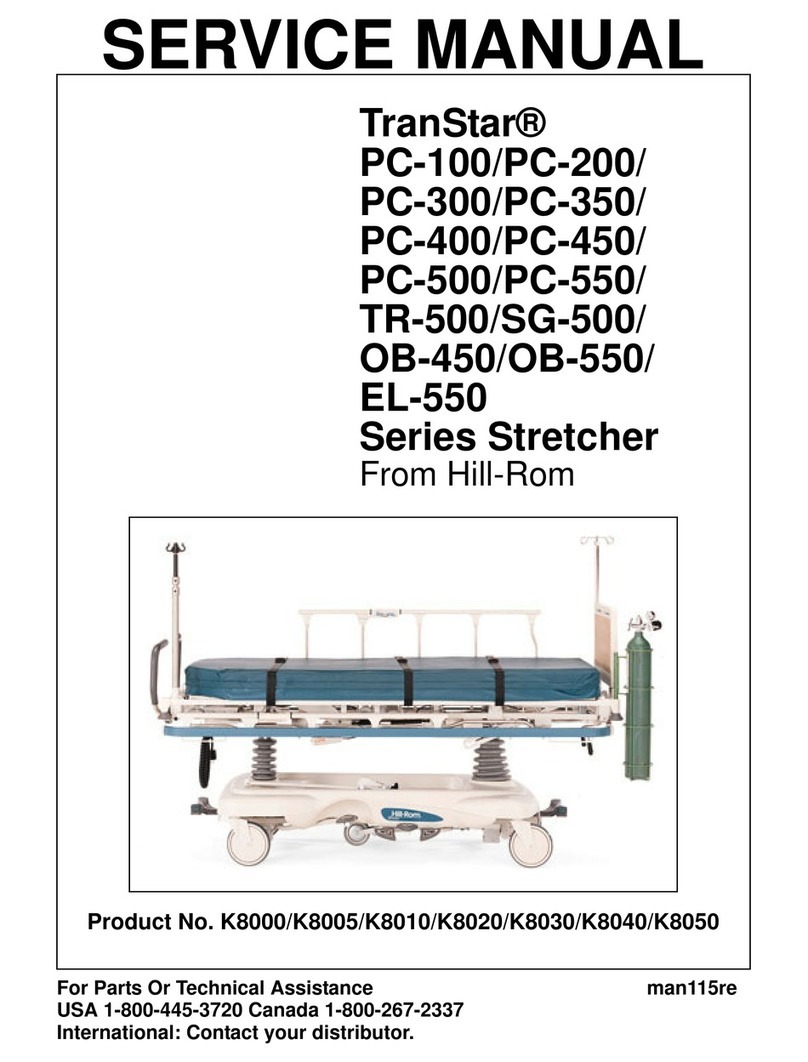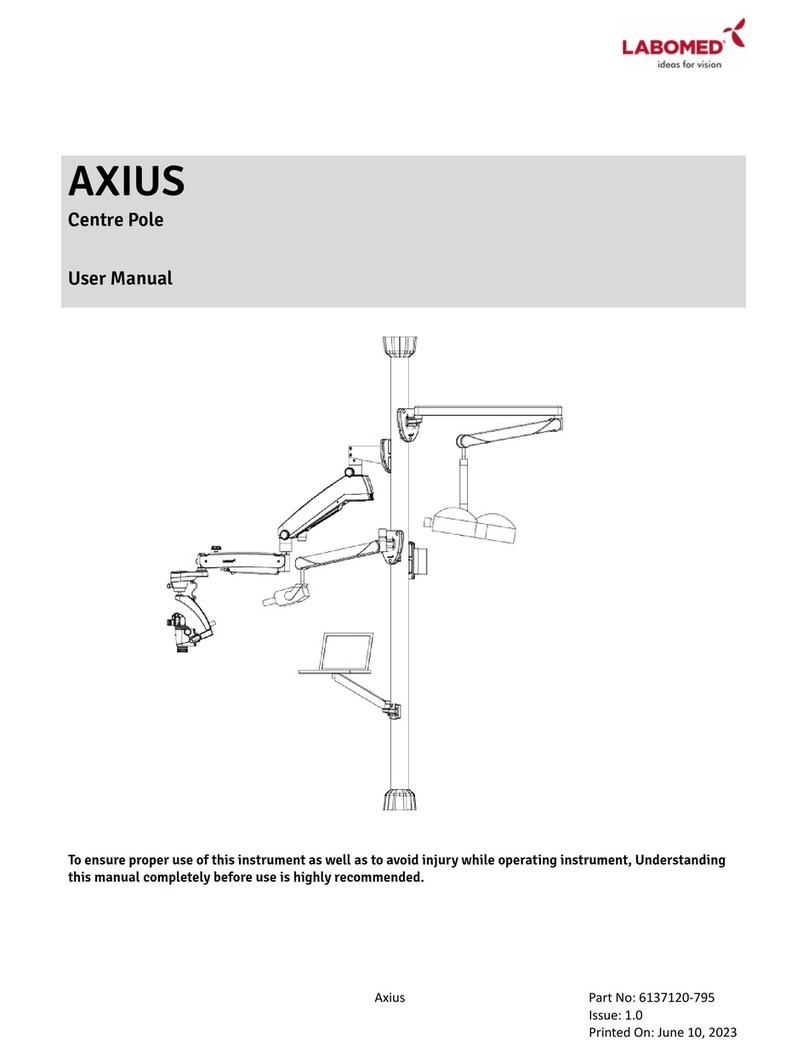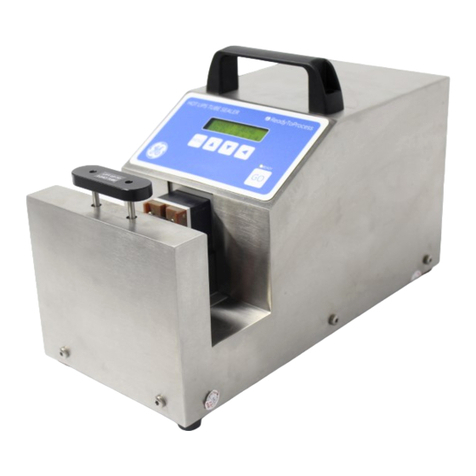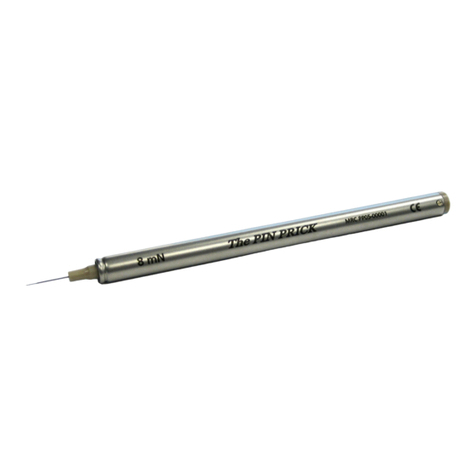
To perform a study using ambient air, turn the Pulmonex ON and pro-
ceed to handle position #2 before connecting the patient to the system.
When the “To Patient” bag is 1/4 full, switch the handle back to position
#1. The system is now ready to use.
Set the timer to 9 minutes (an arbitrary figure that can be changed at
any time depending on the study procedure you prefer).
Place the face mask over the
patient’s face and attach mask
retainer or mouthpiece and nose
clip (catalog #131-774). Place a
vertex cape (catalog #055-101)
on the patient. (See Figure 6.)
Turn the handle to the “Start”
position. nstruct patient to
breathe briefly while becoming
accustomed to the face mask.
The “From Patient” bag will
move slightly as the patient
exhales.
Switch the handle to single breath, Equilibrium position #2. Take either
the automatic xenon dispenser tube with needle, Du Pont Calidose Gun or
syringe filled with xenon, and puncture the injection site of the face mask
or mouthpiece. Add the xenon as you have the patient take a deep breath.
nstruct patient to hold breath for as long as possible. After exhaling the
patient should resume normal breathing while you increase the “Patient Air
Flow” control to 70 (an arbitrary figure that can be changed to accommo-
date the patient’s breathing pattern).
Advise the patient to breathe normally. Observe breathing bags moving
through the front panel windows. Add oxygen if necessary for patient comfort.
NOTE: If the xenon is not getting to the patient for single breath, lower the
“Patient Air Flow” control to 10 or 20 for approximately five seconds before
xenon administration and instruct patient to take a deeper breath.
Once the patient reaches equilibrium (1 - 2 minutes, the counting rate
on the camera stabilizes), switch to “Washout,” position #3. Take washout
data on the camera (typical framing: first picture, 15 seconds; second, 30
seconds; third, 60 seconds). Have the patient breathe normally.
Carefully watch the “From Patient” bag. f it starts blowing up, the
patient is breathing too fast. Advise normalized breathing and increase the
“Patient Air Flow” speed. f the bag continues to expand up towards the
glass, the patient will feel back pressure and resistance. To relieve this
effect, increase “Trap Air Flow” by turning knob clockwise until the breath-
ing bag deflates. Return the control to approximately 1/2 of its range when
– 7–
Figure 6





















